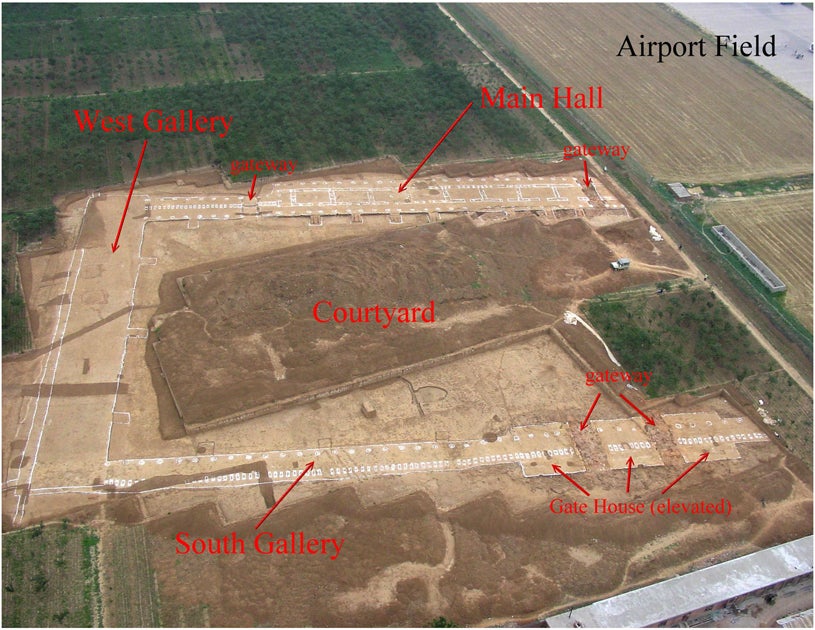Human sacrifices discovered at torched Shang Dynasty city Huanbei

A team of researchers excavating a 3,300 year old Shang Dynasty palace-temple complex at the ancient city of Huanbei have discovered that it was burned down after only 50 years of use by the city’s own rulers.
The complex was stripped of all its goods before being destroyed, but a large number of human sacrifices were left behind, with 40 discovered in one building alone.
Professor Zhichun Jing, of the University of British Columbia, has been working with colleagues in China to excavate and study Huanbei, which is a large site, slightly bigger than New York’s Central Park. The palace-temple complex was at the centre of Huanbei, and would have had a population of at least 10,000 people.
Jing explains that the city was planned in accordance with Shang cosmology, with all buildings oriented at 13 degrees east. This is seen at other Shang sites, and researchers are hoping to decipher the meaning of this orientation. The complex itself, which would have served as both a temple and palace, contains at least sixty buildings. In the largest of these (the largest Bronze Age building ever found in China), a number of sacrificial pits have been discovered containing several skeletons.
A layer of red burnt earth covers the buildings, and the team have concluded that the whole city was destroyed by a single fire. The lack of bodies or other evidence of a battle suggests that the city may have been torched by its own rulers rather than invaders – a theory supported by the fact that few examples of pottery, gems or jewellery were found at the site. Jing suggests that the inhabitants took everything with them before setting the city alight. The whole city was abandoned, and another city, Yinxu, was founded on the other side of the river.
However, the inhabitants left behind a particularly large number of human sacrifices, with at least 40 in the largest building. Human sacrifice was not unusual during the Shang Dynasty, and most medium/large size tombs from this time period contain human sacrifices.
Professor Jing explained that that further scientific analysis needs to be done on the bodies, but that oracle bone inscriptions found at other Shang sites suggest that sacrifices were prisoners of war.
“According to oracle bones inscriptions the victims for the ritual killings (were) likely the captives of the war the Shang engaged with neighbours,” said Jing. “Definitely by the end of the dynasty the war captives were the primary source of human victims.”
Another possibility is that some of the sacrifices might be criminals, who were made to pay the ultimate price for their alleged crimes. Strontium analysis performed on human bones show that when Yinxu was first founded, after the abandonment of Huanbei, many of the sacrifices were local people.
Even though only a small portion of the site has been excavated, Huanbei, along with Yinxu, has recently been named a UNESCO World Heritage Site – a designation that will help protect it from modern development. Over 30 square kilometres have been designated as protected. Without the threat of development archaeologists will be able to excavate the site slowly and carefully, and will hopefully reveal more about the inhabitants of the hastily abandoned Shang city.
Is this a golden age of archaeology in China?
China’s ten most important archaeological discoveries
114 terracotta warriors discovered in the mausoleum of Qin Shi Huang
Join our commenting forum
Join thought-provoking conversations, follow other Independent readers and see their replies
Comments